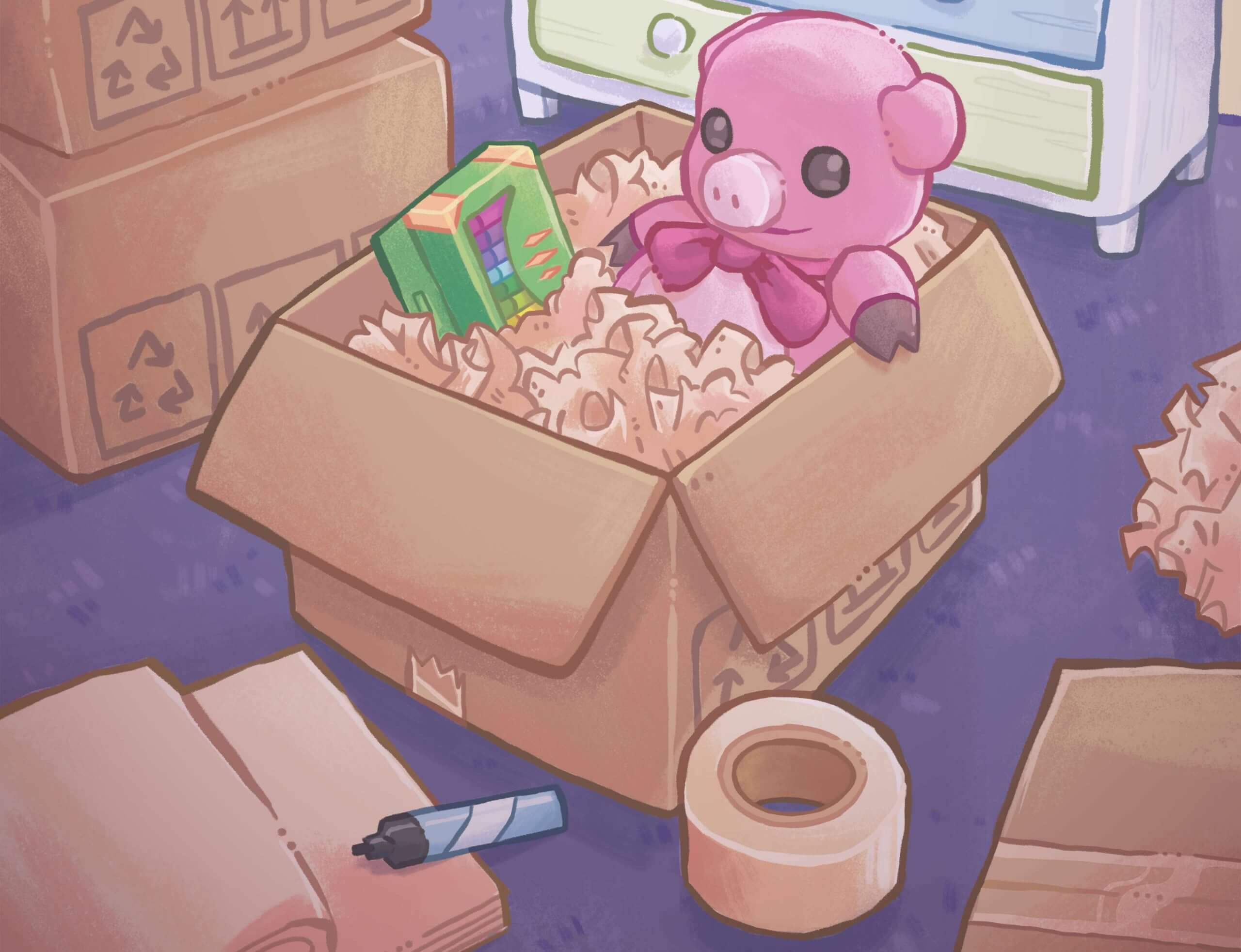Unpacking is the game of 2021.
Ok, my bad. That’s a little deceptive. You probably read that in your head as ‘Best Game of 2021’, and I’m not (necessarily) saying that. (Although I probably would – Ed)
2021 has been a year of repeatedly stopping and starting. Of being inside and wrapping ourselves in softness and familiarity if only to protect ourselves when we inevitably plunge into the dangerous unknown. We are seeing the ramifications of choices made in 2020, and even before that. We are waking up to how bad those choices were for us and the world. But instead of facing this head-on and pushing for real change, we more often than not retreat to comfortable spaces and continue to make the best of what we have. Even if those spaces become increasingly hostile.
I guess what I’m saying is that if 2021 were a videogame, It would involve a lot of chill, relaxing art and music, with undemanding gameplay. A videogame that subtly told the story of your past mistakes, the changes you strive to make, and the happiness you eventually make for yourself.
Witch Beam’s Unpacking is, at least on paper, that game. You start in your first own bedroom, as a child, pinks and blues and soft garden light. Joyful, ambient music plays that sounds almost as if it’s coming from downstairs. Clicking on your boxes unpacks, one at a time, your belongings; right-click to rotate them, and left-click to place them. On the shelves, on your desk, on your bed, in your cupboard, on your window sill, on the floor. Some items, like clothes, stack, and some fit better in different orientations.

Empty a box, and it folds up and vanishes. Empty all the boxes and the game will tell you if any objects are in places they shouldn’t be (Don’t leave your GameBoy on the floor!). Once everything is in its proper place, a star will appear, then you click on it to take a photo, add it to your photo album, and then the next level begins.
And that’s kinda it. That’s Unpacking, just dragging and dropping pixel items where they will fit, having your own fun rearranging and remodelling your rooms to pleasant beats. As you progress each new level adds new rooms; the second level, 2004, adds a kitchen and bathroom, and 2008 adds a dining room and living room. Finishing a level on a different room gets you a different quote for your photo album. More spaces mean more items, and more items mean more sorting and managing. It’s untaxing, it’s relaxing, it’s very pretty.
But it’s within that soft cocoon of gameplay on the first levels that a truly impressive, heart-eating beast dwells; environmental storytelling.

Firstly, it’s worth noting how a story is told without any words, other than the end of level quotes. Your gender, for instance, isn’t too obvious; amongst your first childhood belongings are plushies, action figures, a jump rope, a football, art supplies, a handheld console, and cute posters. What you can take away from this, however, is that you’re a toy and art-loving kid, having just moved into your very first bedroom.
When you move to 2004, the environment hints at a university dorm; you have a shared bathroom and kitchen, and your books contain a lot of textbooks. Your art stuff has expanded to include a computer and drawing tablet, hinting that you might be studying illustration or similar. Much like in real life, items for one room are packed in boxes for other rooms, either for space or by accident. It’s fun to notice these things, implying you and your parents had the usual difficulties packing that I and mine had back in the day.
At this point, it’s worth starting to pay attention to what items your character keeps between homes, and what they don’t. In college, a couple of battered plushes come with you, alongside some books, and some of your figures. The GameBoy is gone, but a GBA takes its place. No jump rope, no football. A story is being told about your change in preferences as you mature.

In 2008, you move into a shared home with a bunch of nerrrrrds. There’s already tonnes of stuff in this home, but they’ve made space for you with lots of empty shelves and cupboards and your own bedroom. You have loads more nerd things now; dice, models, a D&D party illustration to slap on the wall, a Gamecube and, of course, your University Diploma, pride of place.
Aaaand that’s where I’ll stop describing the levels because I don’t want to spoil it. Let’s just say you might want to unpack the tissues by the end and leave it at that.
For me at least. These dates for moving into new homes align very closely to similar events in my own life. Personally, I found Unpacking a very reflective experience. So when Unpacking refused to pull its emotional punches, it hurt.

Seriously, I’m not joking. From 2011 onwards, there will be… things. Times where the quiet storytelling is very emotional. Important items that cant be placed anywhere. Single items in sets that get singled out and banned from being visible. Treasured possessions turning up in familiar places. One level started, and I looked at the screen, listened to the sad music, and just swore. Impressive stuff with almost zero words.
All this said, Unpacking is a great few hours. The gameplay is soft and comforting, while the narrative takes you on a gentle and emotional journey that isn’t afraid to get you right in the feels. Play around, have fun; the game rewards you with stickers for wacky or specific combinations. Play with the artist’s maquette or throw a toaster in a bath to see what I mean.
All in all, for such a small team, Unpacking is a wonderful and relaxing treat.

…Also, they recorded 14,000 satisfying foley sounds for placing items?!? Whut.
Game of 2021.

